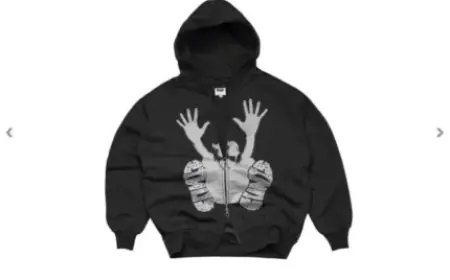Returnable Packaging Market Growth Factors: What’s Fueling the 5.98% CAGR Boom?
Returnable Packaging Market Growth Factors: What’s Fueling the 5.98% CAGR Boom?
Global Returnable Packaging Market Analysis, Trends, and Forecast 2030
According to the TechSci Research report, “Returnable Packaging Market – Global Industry Size, Share, Trends, Competition Forecast & Opportunities, 2030F,” the Global Returnable Packaging Market was valued at USD 121.85 billion in 2024 and is projected to expand at a CAGR of 5.98% during the forecast period. The market’s growth is primarily driven by rising environmental consciousness, stringent government regulations, and increasing demand for cost-effective and sustainable packaging solutions across multiple industries.
Returnable packaging is designed to be reused multiple times throughout supply chains, providing both economic and ecological advantages. With businesses under mounting pressure to reduce single-use plastics, implement circular economy models, and optimize operational efficiency, the adoption of returnable packaging has become a strategic imperative.
Key Drivers of the Returnable Packaging Market
Sustainability and Environmental Responsibility
The adoption of returnable packaging is being fueled by a global shift toward environmentally responsible business operations. Companies across industries face pressures from regulators, consumers, and internal ESG mandates to reduce packaging waste. Returnable packaging, engineered for multiple use cycles, plays a pivotal role in minimizing landfill dependency and supporting circular logistics models. Organizations implementing closed-loop systems can reuse packaging assets multiple times before eventual recycling, thus reducing both environmental footprint and material consumption.
Economic Advantages
While the initial investment in reusable packaging solutions may be higher than disposable alternatives, the total cost of ownership (TCO) proves significantly lower over time. Reusability decreases the need for frequent replacement, reduces disposal fees, and minimizes product damage during transit. Furthermore, companies optimize supply chain logistics by reducing hidden costs, making returnable packaging a financially sound and operationally efficient choice.
Regulatory Support
Government initiatives worldwide, including the EU Packaging Directive, Extended Producer Responsibility (EPR) mandates, and Zero Waste programs, are enforcing responsible waste management and carbon footprint reduction. Returnable packaging not only ensures compliance but also enhances corporate credibility among environmentally conscious stakeholders. Companies adopting such solutions gain a competitive edge by aligning their operations with global sustainability trends.
Technological Advancements
Technological improvements in tracking systems, pooling software, and reusable packaging design have enhanced the efficiency and scalability of returnable packaging systems. RFID tags, GPS-enabled containers, and cloud-based asset management enable companies to monitor usage, track returns, and optimize reuse cycles, reducing operational inefficiencies and maximizing ROI.
Challenges in Returnable Packaging Adoption
Despite the market’s growth, several challenges limit the full-scale implementation of returnable packaging systems:
-
Lack of Standardization: Variations in dimensions, materials, and handling protocols across industries and regions create interoperability challenges.
-
Custom-Designed Solutions: Packaging tailored to specific operational requirements may limit cross-industry usability.
-
Regulatory Inconsistencies: Differing safety standards and regulations across markets complicate cross-border returns.
-
Collaboration Gaps: Limited cooperation among supply chain partners restricts shared asset models, impacting efficiency and cost-effectiveness.
Addressing these challenges requires global standards, industry collaboration, and investment in modular, scalable packaging solutions.
Segmental Analysis: Ingredient Insights
The Global Returnable Packaging Market can be analyzed through several dimensions including material, product type, end-user industry, and regional distribution.
Material-Based Analysis
Returnable packaging materials include plastic, metal, and wood, each offering unique advantages:
-
Plastic: Widely used due to durability, lightweight nature, and resistance to contamination. Ideal for high-frequency logistics and easy cleaning.
-
Metal: Provides high strength and is suitable for heavy industrial applications, though costlier and heavier than plastic alternatives.
-
Wood: Primarily used for pallets and crates; offers sturdiness but limited lifespan and higher maintenance.
Product-Based Analysis
Returnable packaging products include pallets, crates, IBCs, drums & barrels, dunnage, and other specialized packaging solutions. Each product type is designed to optimize reuse cycles, withstand repeated handling, and reduce damage during transit.
-
Pallets & Crates: Essential for transporting goods over long distances while ensuring protection and stability.
-
Intermediate Bulk Containers (IBCs): Suitable for liquid and chemical products requiring high containment standards.
-
Drums & Barrels: Common in chemical, pharmaceutical, and food industries.
-
Dunnage & Others: Include protective packaging materials, liners, and modular inserts to reduce product damage.
End-User Industry Insights
The food & beverage sector is the leading adopter of returnable packaging due to its stringent delivery schedules and high-frequency distribution cycles, particularly for perishable goods. Returnable solutions, including plastic crates, bins, pallets, and beverage trays, withstand continuous handling, cleaning, and reuse, making them indispensable for operational efficiency.
-
Food Safety Compliance: Returnable packaging made from food-grade plastics ensures adherence to international standards such as HACCP, FDA, and EU food contact material directives.
-
Environmental Goals: Brands in the food & beverage industry are adopting returnable systems to meet sustainability targets by reducing single-use plastics and enabling closed-loop packaging.
Other end-user sectors include automotive, consumer durables, healthcare, and industrial goods, where durability, cost efficiency, and reusability are critical for supply chain optimization.
Regional Insights
The Asia Pacific region is projected to witness the fastest growth in the returnable packaging market. Key growth factors include rapid industrialization, expanding manufacturing networks, increasing e-commerce penetration, and rising environmental regulations.
-
China & India: Emerging as global manufacturing hubs, particularly in automotive, electronics, and FMCG sectors.
-
Vietnam & Indonesia: Increasing demand for logistics efficiency and sustainable packaging solutions.
-
E-commerce Growth: High-frequency deliveries and reverse logistics in populous countries like India and China drive the demand for durable, tamper-resistant packaging systems.
North America and Europe also maintain significant market shares due to stringent regulatory frameworks and early adoption of sustainable packaging solutions.
Leading Players in the Global Returnable Packaging Market
Prominent companies shaping the market include:
-
Brambles Limited
-
Schoeller Allibert Services BV
-
ORBIS Corporation
-
DS Smith
-
Myers Industries Inc.
-
Nefab Group
-
Rehrig Pacific Company
-
Schütz GmbH & Co. KGaA
-
Vetropack Holding Ltd
-
Amatech Inc
These companies invest heavily in innovative packaging designs, tracking technologies, and sustainable solutions to strengthen their competitive positioning.
Market Outlook and Growth Prospects
“The Global Returnable Packaging Market is undergoing a transformative phase, driven by sustainability mandates, cost optimization strategies, and evolving supply chain dynamics. Industries are increasingly prioritizing environmental stewardship and operational efficiency, making returnable packaging a strategic enabler of circular logistics,” said Mr. Karan Chechi, Research Director of TechSci Research.
Future growth prospects include:
-
Expansion of closed-loop systems across industries.
-
Adoption of advanced tracking and pooling technologies.
-
Increased investment in standardized, scalable reusable packaging solutions.
-
Rising demand from emerging economies in the Asia Pacific region.
As companies align with regulatory compliance and sustainability goals, the market is poised for accelerated growth over the next decade.
Frequently Asked Questions (FAQ)
What is the Returnable Packaging Market?
Returnable packaging refers to reusable packaging solutions designed for multiple trips throughout supply chains. These systems reduce waste, minimize costs, and support sustainability initiatives.
Why is returnable packaging gaining importance?
The rise in environmental regulations, sustainability mandates, and the need for cost-efficient logistics has increased adoption. Returnable packaging reduces single-use plastics, lowers total cost of ownership, and improves supply chain resilience.
Which industries benefit most from returnable packaging?
The food & beverage sector leads adoption due to high-frequency distribution cycles. Other sectors include automotive, healthcare, consumer durables, and industrial goods.
What are the primary materials used in returnable packaging?
Key materials include plastic, metal, and wood, each selected based on durability, application, and cost considerations. Plastic is preferred for high-frequency logistics, metal for heavy-duty industrial use, and wood for pallets and crates.
Which regions are expected to drive market growth?
Asia Pacific, particularly China, India, Vietnam, and Indonesia, is expected to see the fastest growth due to industrial expansion, e-commerce demand, and increased environmental regulations.
Who are the major players in the market?
Leading companies include Brambles Limited, Schoeller Allibert Services BV, ORBIS Corporation, DS Smith, and Myers Industries Inc., among others. These companies focus on innovation and sustainable solutions.
What are the key challenges in adopting returnable packaging?
Challenges include lack of standardization, custom-designed solutions limiting interoperability, regulatory inconsistencies, and limited collaboration among supply chain partners.
Conclusion
The Global Returnable Packaging Market is set to witness robust growth driven by sustainability imperatives, cost efficiency, and technological advancements. Industries are increasingly implementing closed-loop systems, leveraging reusable packaging solutions, and meeting regulatory compliance while enhancing operational resilience. With rising adoption in Asia Pacific and advancements in tracking technologies, the market is well-positioned to achieve long-term growth and strategic value creation for stakeholders.
For more information, you can access the full report here: Returnable Packaging Market Report.
Contact
TechSci Research LLC
Office Address: 420 Lexington Avenue, Suite 300
New York, NY 10170, United States
Get in Touch:
Phone: +1-332-258-6602
Email: [email protected]
Website: www.techsciresearch.com
What's Your Reaction?
 Like
0
Like
0
 Dislike
0
Dislike
0
 Love
0
Love
0
 Funny
0
Funny
0
 Angry
0
Angry
0
 Sad
0
Sad
0
 Wow
0
Wow
0

















































